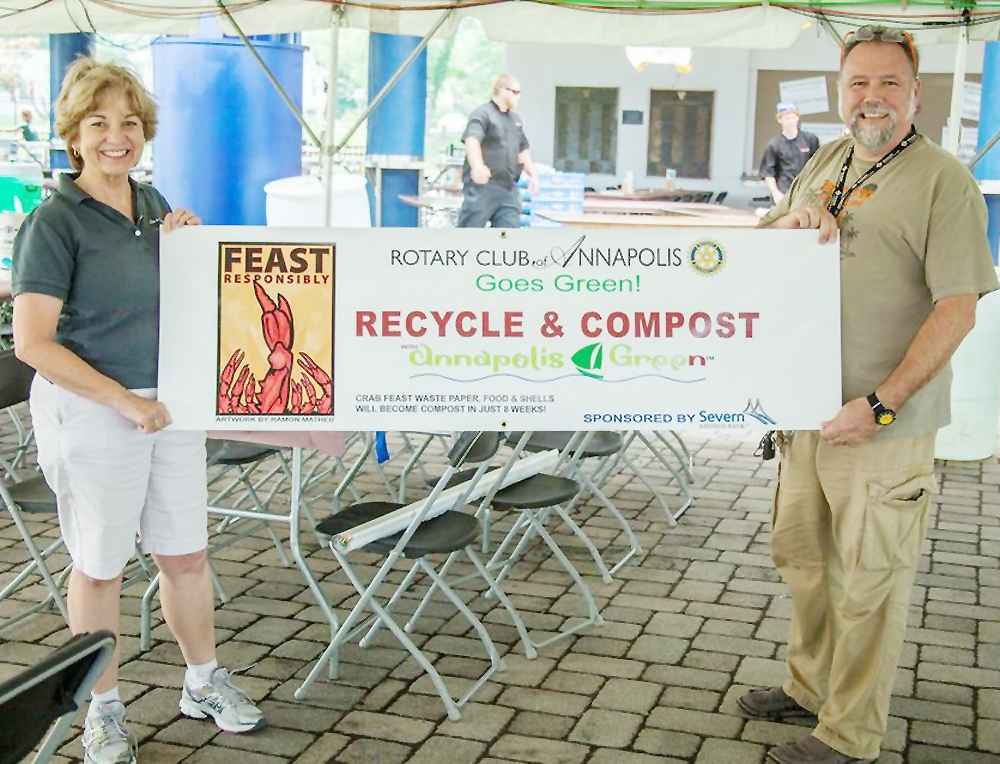The World Biggest Crab Feast didn’t make the world’s biggest mess this year.
Some 4,500 pounds of food scraps — about one-quarter of the food waste produced by the massive feast — will turn into compost instead of hogging precious landfill space.
Cleanup after 2,000 big eaters at the Rotary Club of Annapolis’s annual crab feast is always a chore. Worse, it’s got to be done in two hours; that’s the rule at Navy-Marine Corps Stadium. Normally, the Rotarians make the deadline by pitching soiled butcher paper and everything on it into the garbage.
This year, Annapolis Green partnered with Annapolis Rotary to recycle much of the aftermath. The preferred dining area was targeted in this first year’s effort.
“First we pulled out Styrofoam, plastic and cans,” said Annapolis Green’s Elvia Thompson. Down to forks and spoons, the plastic was binned for recycling, along with cans. Waste Strategies of Annapolis managed that load.
Styrofoam, including bowls for crab soup, had to be trashed.
Elvia Thompson of Annapolis Green and John Nickland of Waste Strategies helped divert 4,500 pounds from the landfill at this year’s Annapolis Rotary Crab Feast.
Next, Thompson, her recycling and composting partners and some 30 Rotarians “rolled everything right up, from butcher paper to crab shells to corn husks and cobs to mallets.”
Veteran Compost trucked off that waste for composting. It will break down in about eight weeks according to Justen Garrity, the Gulf War veteran who is the area’s only licensed commercial food waste composter.
“I thought it went very well,” said Naval Academy professor Jeff Neufeld, Rotary’s chair for this year’s crab feast. “Rotary is based on community service, so any opportunity to aid the environment is a good thing.”
Annapolis Green and the Green Team return to their roots in October, cleaning up the big show where the partnership got its start, the U.S. Boat Shows at Annapolis City Dock.

